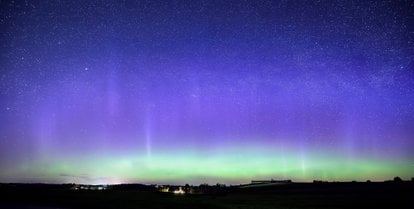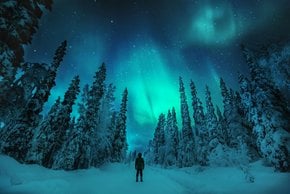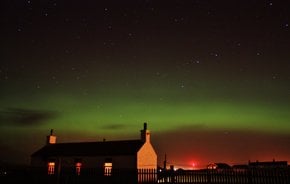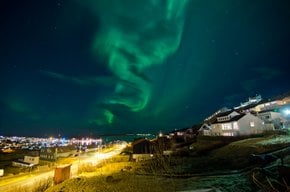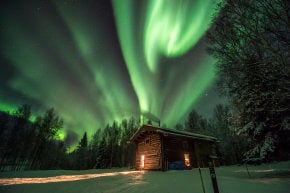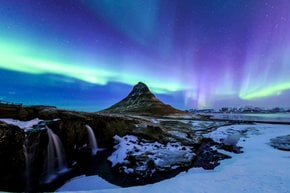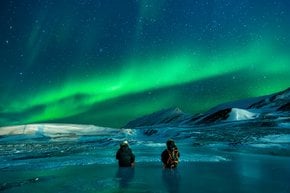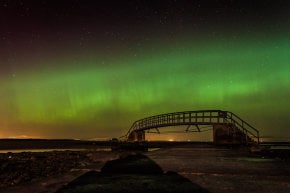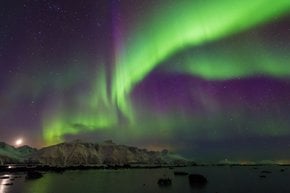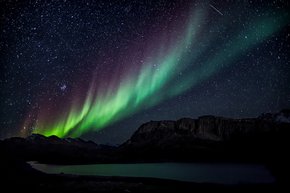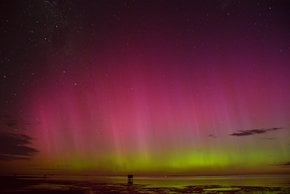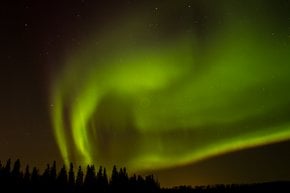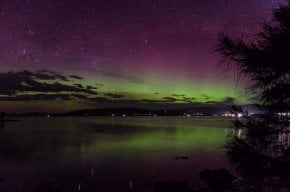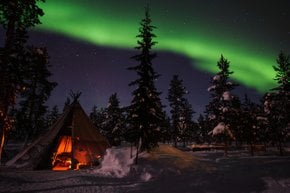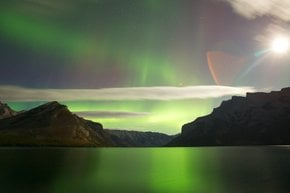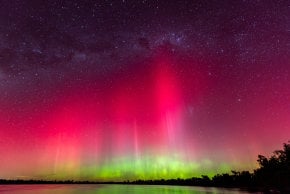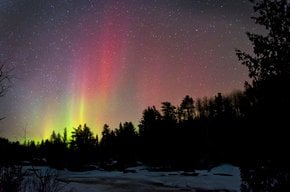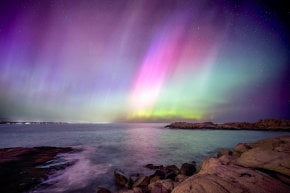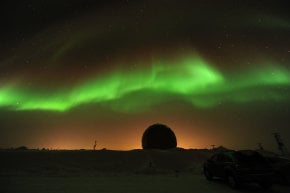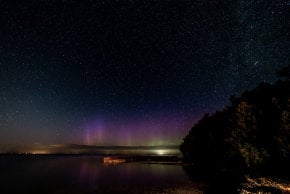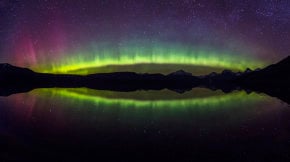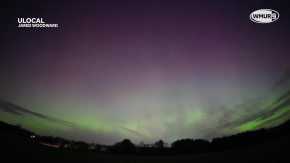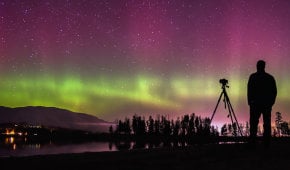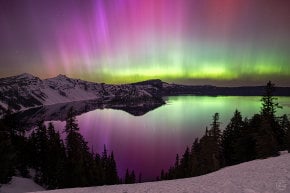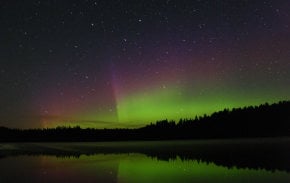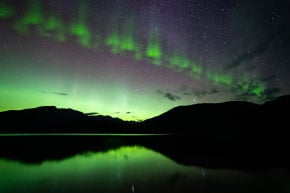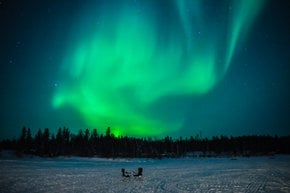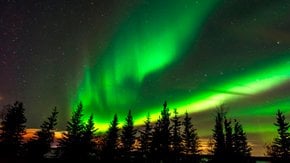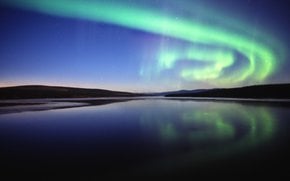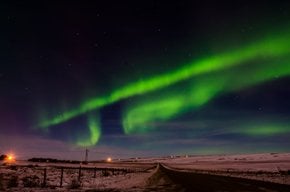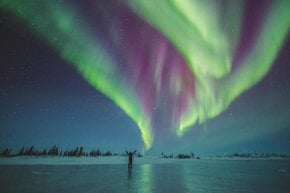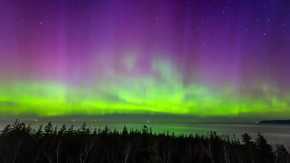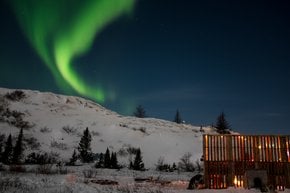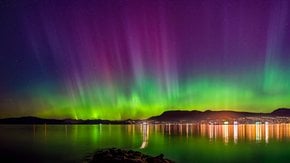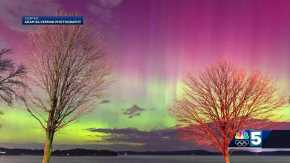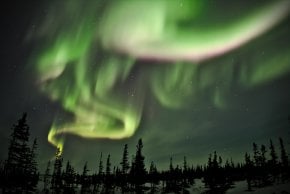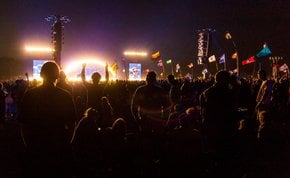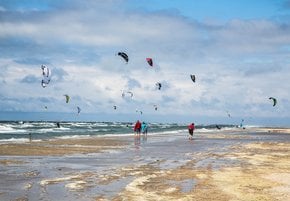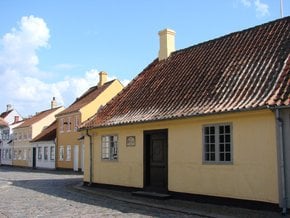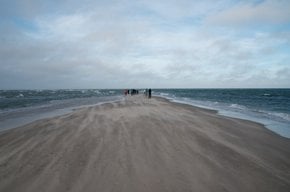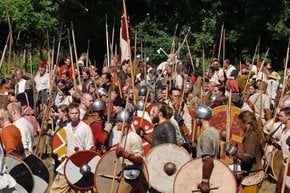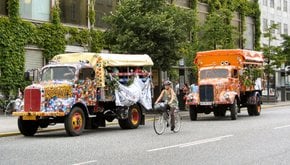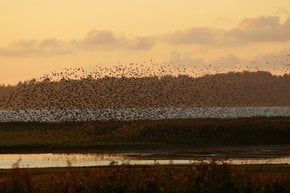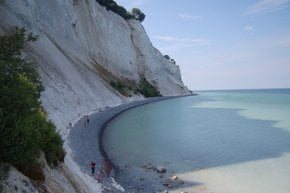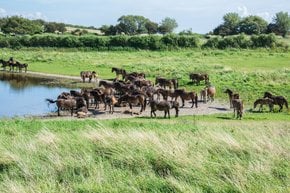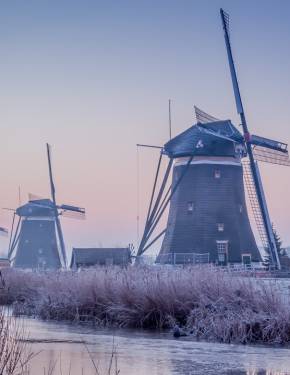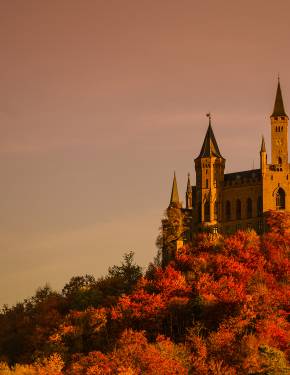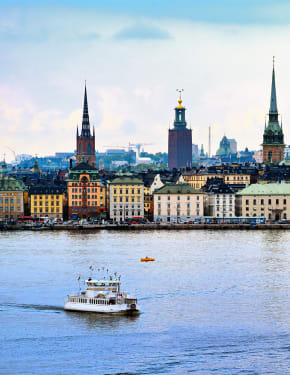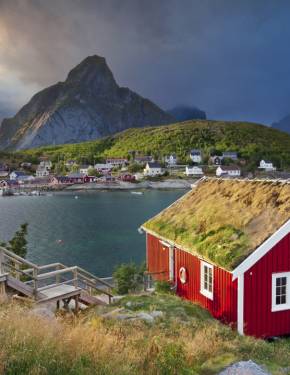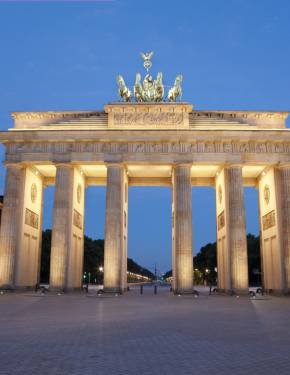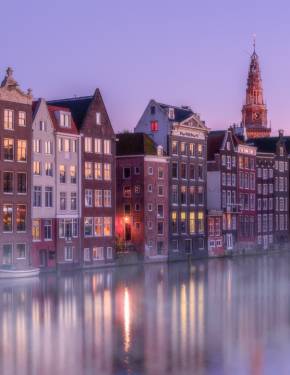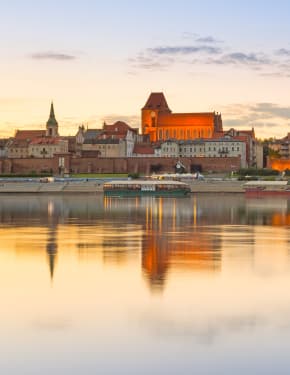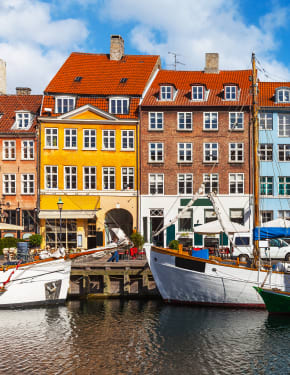Northern Lights in Denmark 2025-2026
Denmark enjoys nature's colourful show a few times per year
Best time: September–early April
The Northern lights, also known as the Aurora Borealis, are renowned for their stunning array of colors, often resembling a full spectrum of the rainbow in Denmark. These natural light displays, however, are a rare sight, occurring only a few times each year during geomagnetic storms. Even when visible, they can be faint and fleeting. The optimal viewing times are generally from September through early April, with the best chances between January and early March, especially on cold, clear nights.
Aurora Borealis Forecast
Forecasting the aurora borealis is challenging, as predictions are typically available only a few days in advance. Despite the unpredictability, enthusiasts and observers flock to areas with minimal light pollution during peak times in hopes of witnessing this mesmerizing natural phenomenon. Check the websites of the NOAA/NWS Space Weather Prediction Center, University of Alaska Fairbanks, which publish aurora forecasts.
Where can you see northern lights in Denmark?
Mainland Denmark (best time: January–early March)
On the continental territories of Denmark, the North Jutland Region, also known as North Denmark Region, offers the highest likelihood of spotting the Northern Lights. This rare phenomenon occurs on days with powerful solar explosions. Visitors can base themselves in Aalborg and venture to more remote areas at night to experience darker skies with reduced light pollution.
Skagen, situated on the northernmost tip of the Jutland peninsula, is particularly recommended for its optimal conditions to witness the Northern Lights in Denmark. Other remote locations such as Kjul Strand, Grenen, National Park Thy, and Samsø also provide excellent opportunities due to their minimal light pollution, enhancing the chances of seeing this natural spectacle.
Samsø
Samsø, a picturesque island known for its remote location, clear skies, and breathtaking vistas, is renowned as one of the prime spots to witness the Northern Lights in Denmark. Positioned farther north than many other locations, Samsø offers optimal conditions for viewing this natural phenomenon. The island's minimal light pollution enhances the chances of catching a glimpse of the aurora borealis. However, occasional obstruction from light emissions from Aarhus, a city located north of Samsø on the Danish mainland, can sometimes affect visibility.
Thy National Park
Located in northern Jutland, National Park Thy not only provides an opportunity to witness the Northern Lights but also offers thrilling outdoor activities. Visitors can explore untouched landscapes through hiking trails and horseback riding, surfing and sailing, cycle along scenic routes, and observe diverse wildlife within the park. The winter months, characterized by frosty conditions, present the optimal conditions for experiencing the ethereal display of the Northern Lights illuminating the night sky. The entrance to the park is free of charge.
Faroe Islands (best time: November–February)
The Faroe Islands, nestled between the Norwegian Sea and the North Atlantic, are renowned as the premier location in Denmark to witness the Northern Lights. When the skies are clear and the weather is cloudless, visitors have the opportunity to witness some of the most spectacular displays of the aurora borealis. The islands of Suðuroy and Sandoy are particularly recommended for chasing the lights, especially during the peak season from late September through early April. The period from November to February offers ample opportunities, and the week before a new moon provides the darkest nights, ideal for optimal viewing conditions. It's a prime destination for experiencing the mesmerizing beauty of the Northern Lights in Denmark.
You can hop on a flight to Vágar Airport, the only airport on the Faroe Islands, and then travel to other villages on the island to find a dark place to spot aurora borealis. Some of the most famous locations include Sornfelli mountain, the village of Hvannasund, and Viðareiði, the northernmost settlement on the Island of Viðoy and all Faroe Islands. Read more here.
Greenland (best time: September–early April)
The further north into the Kingdom of Denmark you go, the higher the chances get. Naturally, Greenland's northern lights surpass those of the Faroe Islands and are worth a long trip to the travelers' final frontier. The island will surely become your top choice to indulge in the celestial light show as long as you can stand the cold. The best time for aurora viewing here is September through the beginning of April.
Popular spots to chase aurora borealis in East Greenland include Tasiilaq (Ammassalik) and Kulusuk on the east coast. The west coast has more great options such as Ilulissat, Kangerlussuaq, Sisimiut, and Nuuk. Read more here.
Visitor Reviews
Rove.me gathered insights from Petra Lindblad and Janni Damsgaard Hansen, two seasoned Northern Lights enthusiasts, to provide essential tips for spotting auroras in Denmark. Petra, originally from Hungary, has streamlined her tracking process using spaceweatherlive.com and the Aurora Alerts app, focusing on specific indicators like solar wind speed above 400 and strong magnetic fields. She advised setting realistic expectations: “Cameras will capture brighter colors than the human eye, so don’t be disappointed if the lights appear subtler.” Her key tip is to commit only when the forecast shows high chances and always dress warmly for prolonged waiting times.
Janni, a native of Odense, shared her experience of an exceptional aurora sighting on October 10th, where vibrant formations were visible even with light pollution. Her advice includes finding low-light areas for the best experience and using apps or consulting experienced trackers to monitor conditions. She also stressed the importance of patience: “There are no guarantees, even when the numbers look good.” Janni added that during strong displays, colors may be visible to the naked eye, making the effort worthwhile.
Both Petra and Janni emphasized the need for preparation and realistic planning. While Denmark’s auroras are less frequent than in northern regions, they agree the rare displays are breathtaking when conditions align, rewarding those who come prepared with unforgettable views.

